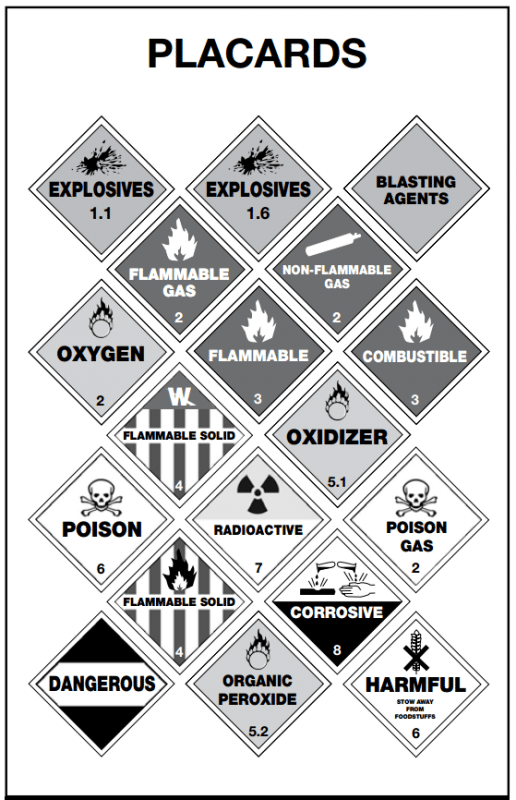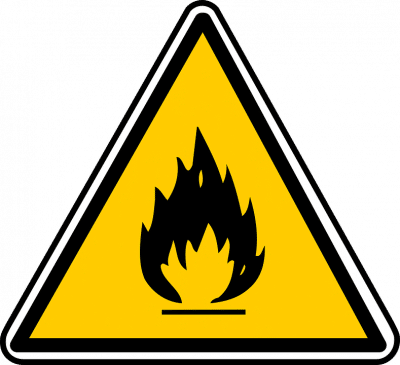As motorists, we often come across trucks that are transporting hazardous materials or waste on our local highways and freeways. Hazardous materials are described as substances that “could cause injury or death; or damage or pollute land, air, or water” (EHS). In addition, hazardous wastes are defined as “substances that are ignitable (flammable), corrosive, toxic, explosive, or reactive, i.e., react with air, water, or acids or bases” (EHS). The different types of hazardous materials can be extremely dangerous for the public if a spill or an accident were to occur with the truck containing the hazardous material. The nuclear industry throughout the world has grown with the development of nuclear power that provides a better life for everyone. As a direct result of the use of nuclear technology, we now have increased the amount of radioactive waste that must be safely transported and stored. All of these factors combined results in more hazardous materials than ever before on highways. Accidents have been few, but increased awareness by enforcement agencies, news media, and the public in the potential dangers involved in the transportation of hazardous materials, has resulted in safer regulations and citations of carriers for violations of the regulations.
Both federal and state governments share responsibility for hazmat transportation safety. In recent years, state and federal policymakers have reviewed the effectiveness of existing regulations, especially due to security concerns about hazardous material transportation. The U.S. DOT has the lead role under the federal Transportation of Hazardous Material law (49 U.S.C. §§5101-5128). This law and it’s regulations allow for consistent national safety standards that apply to shipments of hazardous materials by all forms of transportation. States also have a role in regulating hazmat transportation. The goal of state legislation is to prevent accidents, minimize adverse consequences, and ensure adequate emergency response. State laws address registration and permit programs, routing requirements, notification, financial liability, emergency response planning and training, inspection, enforcement and shipment restrictions. Below is a list of the regulations, training, and requirements to transport hazmat in Utah.
Table of Contents
Utah’s Hazardous Material Regulations
Utah, among all other states, require that the truck carrying the hazardous materials place placards (see image on right: CDL Manual) on the vehicle informing drivers that the truck contains hazardous materials. The placing of placards is only required when the amount being transported is substantial enough to be dangerous and only for certain hazardous materials. Having the placard is also important in case of an accident; the hazmat teams and first responders will need to know what materials they are dealing with in order to respond correctly. Some hazardous materials can injury or kill with contact; knowing this could be the difference between life and death. Along with communicating the type of material, the vehicle must also communicate the risks involved if there was an accident. In addition, according to R315 in Utah Code, the truck must also having shipping labels for the hazardous material in the vehicle at all times and the recording keeping should go back 3 years.
Along with the placards, there is a classification of numbers for the type of hazardous material that corresponds to the dangers involved if an accident were to occur (see image on right: CDL Manual).
Training for Transporting Hazardous Materials
In order to drive trucks that are transporting hazardous materials, the driver must complete trainings on the materials being transported as well as how to handle the containers that are storing the materials. This is becoming difficult as new technologies to transport and contain the materials is constantly being updated. Thus, all drivers of these materials must be continually trained on how to properly transport hazardous materials. As a result, regulations are also continually being improved to provide more safety to those who may be around these materials, this includes the traveling public. The Department of Transportation Pipeline and Hazardous Materials Safety Administration (PHMSA) provides a list of the required training that those handling any part of the transportation process must take. In addition to the original training on hazardous materials, they are also required to take courses every 3 years in order to comply with state and federal regulations on transporting hazardous materials. This continuing education helps provide further safety to those employees as well hopefully reducing the number of incidents with hazardous materials.
General Training Includes:
- General awareness/familiarization
- Function-specific, training
- Safety
- Security awareness
- In-depth security training, if a security plan is required
- Driver training (for each hazmat employee who will operate a motor vehicle)
Furthermore, emergency responders need to be trained on hazardous materials if they are called to the scene of an accident that involves hazardous materials. The Utah Department of Public Safety has a list of courses that are available to emergency responders to be trained on such materials and how to respond.
CDL Licensing and Endorsements for Hazardous Materials
To be eligible for a CDL license, the driver must have a clean driving record. Federal regulations require the driver to pass a physical exam every two years. This is to ensure that the driver is able to safely operate their vehicles. To operate a commercial motor vehicle in interstate commerce, the driver must be at least 21. Applicants must be able to read and speak English well enough to read road signs, prepare reports, and communicate with the public and with law enforcement.
There are three separate classes of commercial driver’s licenses. Every state issues licenses in these categories:
- Class A: Any combination of vehicles with a gross vehicle weight rating (GWVR) of 26,001 or more pounds, provided the GVWR of the vehicle(s) being towed is in excess of 10,000 pounds.
- Class B: Any single vehicle with a GVWR (gross vehicle weight rating) of 26,001 or more pounds, or any such vehicle towing a vehicle not in excess of 10,000 pounds GVWR.
- Class C: Any single vehicle, or combination of vehicles, that does not meet the definition of Class A or Class B, but is either designed to transport 16 or more passengers, including the driver, or is placarded for hazardous materials.
To get an endorsement to be able to transport hazardous materials, the driver is required to take a knowledge test in order to receive an “H” on their license.
Under the USA PATRIOT Act, commercial drivers transporting hazardous materials must pass a background records check and be fingerprinted. The Transportation Security Administration (TSA) is responsible for conducting the background checks for all commercial drivers with hazmat endorsements or who want to add hazmat endorsements to their licenses. The TSA developed this program to carry out the USA PATRIOT Act mandate and protect citizens from the potential threat of terrorists using hazmat cargo.
Hazardous Materials on the Roads
Different states require or have different materials that are permitted to be transported through the state. That being said, Utah allows the transport of some hazardous materials and waste throughout the state. Since Utah has a low-level nuclear waste site, EnergySolutions Clive Operations, located in Clive, Utah, the state must allow the transport of Class A waste on Utah roads. According to the United States Nuclear Regulatory Commission (NRC) there are four types of classification for hazmat waste:
- Class A: is waste that is usually segregated from other waste classes at the disposal site.
- Class B: is waste that must meet more rigorous requirements on waste form to ensure stability after disposal.
- Class C: is waste that not only must meet more rigorous requirements on waste form to ensure stability but also requires additional measures at the disposal facility to protect against inadvertent intrusion.
- Greater than C: is waste that is not generally acceptable for near-surface disposal so the disposal methods must be different, and in general more stringent, than those specified for Class C waste. In the absence of specific requirements in this part, such waste must be disposed of in a geologic repository.
Low-level radioactive waste is generated at facilities such as nuclear power plants, hospitals, and research institutions. Though this type of hazardous material doesn’t pose much of a threat on Utah roads, there are other types of hazardous materials that are being transported through the country, and subsequently through our backyard.
Every day in the United States there are more than 800,000 shipments of hazardous materials in trucks, according to the Federal Motor Carrier Safety Administration. In addition, about 200 hazmat trucks a year are involved in fatal crashes and 5,000 in nonfatal crashes. Even though these numbers seem small compared to the totals of almost 5,000 trucks involved in fatal crashes and 400,000 involved in nonfatal crashes annually, the potential for human injury and property damage in hazmat crashes is much greater. The type of cargo that was present on these trucks was flammable liquids, in most cases it was gasoline.
Crashes involving large trucks (gross vehicle weight rating of more than 10,000 pounds) carrying hazardous materials are somewhat rare. Less than 10 percent of truck shipments include hazmat as all or part of the cargo load. Less than 5 percent of large truck crashes involve trucks carrying hazmat. Even though there are far more non-hazmat accidents than there are hazmat accidents on the roads, the damages and injuries sustained during an accident involving hazardous materials could be much worse and tragic for those involved.
Contact Us
Transportation companies carrying hazmat look to gain the most amount of profit, unfortunately, in order to do this they may save money by not be completing the safety requirements and precautions that are needed to transport these materials. If you have been involved in an accident with a truck that was carrying hazardous materials, the seriousness of your injury could have been worsened by the company not doing what they needed to do in order to keep the public safe. Call Good Guys Injury Law at (801) 506-0800 for a free confidential consultation to discuss the compensation you deserve for the pain and suffering you have endured.
For more information on trucking statistics visit our page.
Image courtesy of Pixabay

